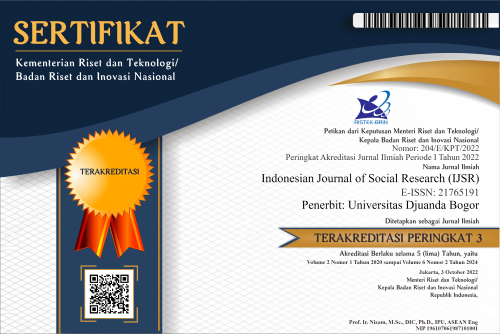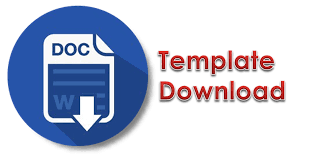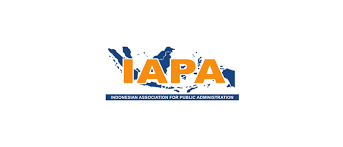Analysis of The Marketing Efficiency of Curcuma in The Medicine Plant Processing Industry
Abstract
Farmers distribute curcuma through several marketing agencies to the sringanis plantation processing industry. It impacts farmers' income, so the research aims to determine the pattern of Curcuma marketing channels as a raw material for the medicinal plant processing industry, the value of efficiency indicators, and the level of efficiency of each marketing channel—methods of data collection using purposive sampling and snowball sampling. Respondents are farmers, middlemen, and managers of the sringanis plantation processing industry. The analytical approach uses quantitative analysis, namely analysis of marketing channels, marketing margins, farmer share, and marketing efficiency. The results showed that there were two patterns of Curcuma marketing channels, namely marketing Channel I, which included farmers and the sringanis plantation processing industry, and marketing Channel II which had farmers, intermediaries, wholesalers, and the sringanis processing industry. The marketing functions performed by all marketing agencies are exchange functions, physical functions, and facility functions. Farmer share obtained by marketing Channel I is more significant than Channel II, so marketing Channel I is more efficient than Channel II. The implication that farmers and the sringanis garden industry can apply is to enter into a cooperation contract where every profit and risk obtained has been adjusted by mutual agreement. Distance constraints for farmers who use marketing Channel II can be overcome by selling a portion of Curcuma produce to intermediaries with a proportion of 60%, and the remaining 30% is sold directly to the sringanis plantation processing industry.
References
Ali, M. F., Situmorang, S., & Murniati, K. (2018). Analisis efisiensi pemasaran kubis di kecamatan gisting kabupaten tanggamus. Jurnal Ilmu Ilmu Agribisnis . 5(3): 258-266. https://jurnal.fp.unila.ac.id/index.php/JIA/article/view/1638
Andayani, W. (2007). Analisis Efisiensi Pemasaran Kacang Mete (Cashew Nuts) di Kabupaten Wonogiri. Jurnal Akta Agrosia. 7(1): 56-64. http://katalog.pustaka.unand.ac.id/index.php?p=show_detail&id=90084
Annisa, D., Yulius, Y., & Bidarti, A. (2019). Analisis Pemasaran Sayuran Di Desa Merah Mata Kecamatan Banyuasin I Kabupaten Banyuasin. [Skripsi]. Palembang: Unversitas Sriwijaya. https://repository.unsri.ac.id/26271/
Arafah, N., Iskandar, E., & Fauzi, T. (2017). Analisis Pemasaran Bawang Merah (Allium cepa) di Desa Lam manyang Kecamatan Peukan Bada Kabupaten Aceh Besar. Jurnal Ilmiah Mahasiswa (JIM) Pertanian. 2(1): 134-140. http://www.jim.unsyiah.ac.id/JFP/article/view/2259
Asmarantaka, R. W. (2012). Pemasaran Agribisnis (Agrimarketing). Bogor: Fakultas Ekonomi dan Manjemen, Institut Pertanian Bogor.
[BPS] Badan Pusat Statistik. (2017). Statistik Tanaman Biofarmaka Indonesia 2017. Jakarta : Badan Pusat Statistik.
Budiono, R., & Syaichu, A. (2016). Manajemen rantai pasokan jagung asalan pada CV Amin di Lampung Tengah. Spektrum Industri. 14(2): 109-230. http://dx.doi.org/10.12928/si.v14i2.4910
Downey,W.D dan S.P. Erickson. ( 1992). Manajemen Agribisnis. Erlangga. Jakarta
Erzal, M. F. (2016). Analisis Saluran, Margin, dan Efisiensi Pemasaran Itik Lokal Pedaging. Students E-Journal. 5(1): 1-12. http://jurnal.unpad.ac.id/ejournal/article/view/8083
Fahrurrozi, F., Kusrini, N., & Komariyati, K. (2015). Analisis Efisiensi Saluran Pemasaran Bahan Olahan Karet Rakyat (Bokar) Lump Mangkok Dari Desa Kompas Raya Kecamatan Pinoh Utara Kabupaten Melawi. Agrise. 15(2): 110-117/ https://agrise.ub.ac.id/index.php/agrise/article/view/168
Lukito dan Prayugo. (2007). Pemasaran Lobster air tawar. Jakarta: Penebar swadaya.
Piechowiak, T., Grzelak-Błaszczyk, K., Bonikowski, R., dan Balawejder, R. (2020). Optimization of extraction process of antioxidant compounds from yellow onion skin and their use in functional bread production. LWT- Food Science and Technology. 117:108614. https://doi.org/10.1016/j.lwt.2019.108614
Pradana, F. A. (2017). Analisis Usaha Dan Efisiensi Pemasaran Melon (Cucumis melo L) di Kabupaten Karanganyar. Agrista. 5(1): 36-45. https://jurnal.uns.ac.id/agrista/article/view/30950
Rensburg, T. M. van, dan Mulugeta, E. (2016). Profit efficiency and habitat biodiversity: The case of upland livestock farmers in Ireland. Land Use Policy. 54: 200-211. https://doi.org/10.1016/j.landusepol.2016.01.015
Riswandi, D. I., & Oktariza, W. (2015). Analisis Margin dan Efisiensi Pemasaran Ikan Bandeng dan Ikan Tongkol di DKI Jakarta. Jurnal Sains Terapan. 5(1): 60-73. https://journal.ipb.ac.id/index.php/jstsv/article/view/28857
Rosmawati, H. (2011). Analisis Efisiensi Pemasaran Pisang Produksi Petani di Kecamatan Lengkiti Kabupaten Ogan Komering Ulu. Jurnal Agronobis. 3(5): 1-9. https://agronobisunbara.files.wordpress.com/2012/11/5-henny-pisang-hal-1-9-oke.pdf
Salim, Z., & Munadi, E. (2017). Info komoditi tanaman obat. Jakarta: Badan Pengkajian dan Pengembangan Perdagangan Kementerian Perdagangan Republik Indonesia
Sari, I. N., Winandi, R., dan Atmakusuma, J. (2012). Analisis efisiensi pemasaran jagung di Provinsi Nusa Tenggara Barat. Forum Agribisnis. 2(2): 191-210. https://doi.org/10.29244/fagb.2.2.191-210
Sudiyono, A. (2004). Pemasaran Pertanian. Malang: UMM Press.
Suhaeni, S., & Andayani, S. A. (2020). Saluran dan tingkat efisiensi pemasaran bawang merah di kabupaten majalengka. Jurnal Agrimanex: Agribusiness Rural Management and Deveopment Extension. 1(1): 1-9. https://journal.unsika.ac.id/index.php/agrimanex/article/view/4745
Suminartika, E., & Djuanalia, I. (2017). Efisiensi Pemasaran Beras di Kabupaten Ciamis dan Jawa Barat. Mimbar Agribisnis: Jurnal Pemikiran Masyarakat Ilmiah Berwawasan Agribisnis. 3(1): 13-28. https://jurnal.unigal.ac.id/index.php/mimbaragribisnis/article/view/72
Wulandari, D., Qurniati, R., & Herwanti, S. (2018). Efisiensi Pemasaran Durian (Durio Zibethinus) di Desa Wisata Durian Kelurahan Sumber Agung. Jurnal Sylva Lestari. 6(2): 68. http://dx.doi.org/10.23960/jsl2668-76
Copyright (c) 2023 Indonesian Journal of Social Research (IJSR)

This work is licensed under a Creative Commons Attribution-ShareAlike 4.0 International License.
The Authors submitting a manuscript do so on the understanding that if accepted for publication, copyright publishing of the article shall be assigned/transferred to Indonesian Journal of Social Research (IJSR) Universitas Djuanda as Publisher of the journal. Upon acceptance of an article, authors will be asked to complete a 'Copyright Transfer Agreement'. An e-mail will be sent to the corresponding author confirming receipt of the manuscript together with a 'Copyright Transfer Agreement' form by online version of this agreement.
Indonesian Journal of Social Research (IJSR) Universitas Djuanda, the Editors and the Editorial Board make every effort to ensure that no wrong or misleading data, opinions or statements be published in the journal. In any way, the contents of the articles and advertisements published in the Indonesian Journal of Social Research (IJSR) Universitas Djuanda are sole and exclusive responsibility of their respective authors and advertisers.
Remember, even though we ask for a transfer of copyright, our journal authors retain (or are granted back) significant scholarly rights as mention before.
The Copyright Transfer Agreement (CTA) Form can be downloaded here: Copyright Transfer Agreement-IJSR 2020
The copyright form should be signed electronically and send to the Editorial Office e-mail below:
Dr. Rasmitadila, M.Pd (Editor-in-Chief)
Universitas Djuanda
Jl. Tol Jagorawi No.1, Ciawi, Kec. Ciawi, Bogor, Jawa Barat 16720
Website: http://journal.unida.ac.id/index.php/IJSR/index
Email: ijsr@unida.ac.id





4.png)



